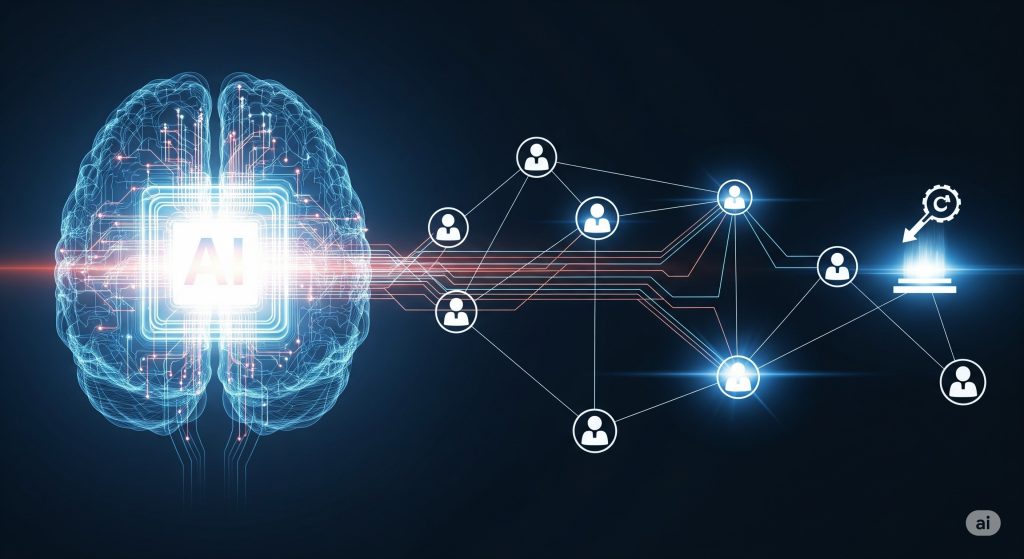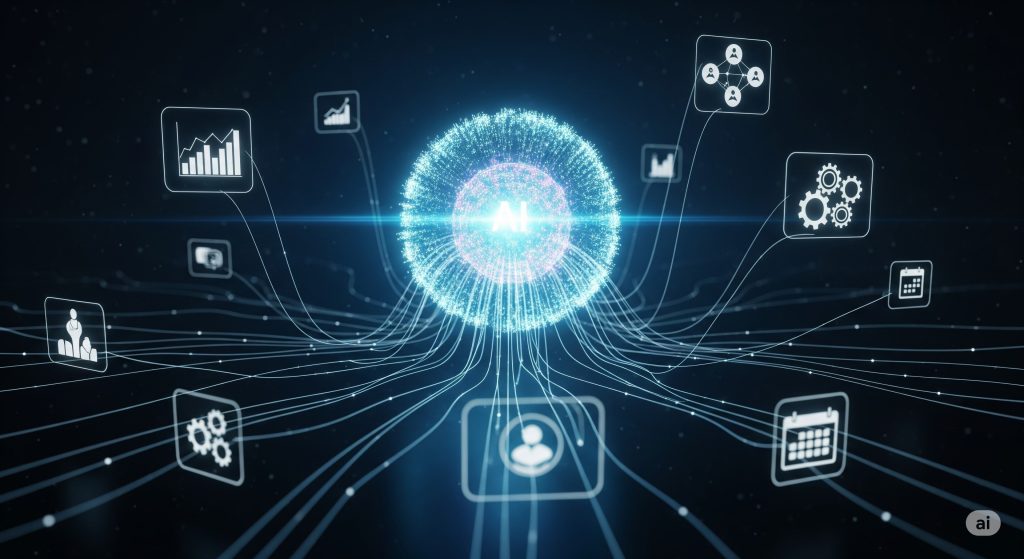Imagine a world where AI models seamlessly connect, like plugging in a USB-C cable. The Model Context Protocol (MCP) is revolutionizing AI integration, making it effortless to orchestrate AI applications with various data sources. This universal protocol addresses the N into M integration problem, reducing the need for custom code. By providing a standardized AI integration framework, MCP enhances scalability and efficiency. Discover how this transformative solution streamlines AI connections, unlocking new possibilities for seamless AI orchestration. Explore the future of AI integration and learn how MCP is reshaping the landscape, empowering businesses to harness the full potential of AI.
Laying the Foundation: Understanding MCP’s Role in AI Integration
Technical Requirements: Must-know Fundamentals
The Model Context Protocol (MCP) represents a breakthrough in AI integration, functioning as a universal connector that standardizes how AI models interact with various data sources. Similar to how HTTP revolutionized web communications, MCP establishes a common language for AI systems to communicate effectively.
At its core, MCP eliminates the complexity of traditional AI integrations by providing:
- Standardized connection interfaces
- Universal data source compatibility
- Simplified context access for AI models
- Reduced implementation overhead
Initial Challenges: Common Roadblocks & Solutions
One of the most persistent challenges in AI implementation has been the N into M integration problem, where multiple AI models need to connect with various data sources. This challenge traditionally required extensive custom coding and maintenance efforts.
MCP addresses these integration hurdles through:
- Automated connection management
- Standardized data access protocols
- Reduced dependency on custom integration code
- Simplified maintenance and updates
Accelerating Growth: Building Desire for Seamless AI Connections
Key Performance Indicators: Defining Success
The effectiveness of MCP in AI orchestration can be measured through several critical metrics:
- Integration time reduction
- Resource utilization efficiency
- System scalability improvements
- Maintenance cost reduction
“MCP enhances AI’s utility by allowing models to access necessary context without custom integrations, making AI orchestration more efficient and scalable.”
Common Pitfalls: Mistakes to Avoid
While implementing MCP, organizations should be aware of potential challenges:
- Insufficient planning for data source compatibility
- Inadequate consideration of scaling requirements
- Overlooking security protocols
- Poor documentation practices
To ensure seamless AI connections, consider these best practices:
- Conduct thorough compatibility assessments
- Implement robust security measures
- Maintain comprehensive documentation
- Plan for scalability from the start
Optimizing Results: Driving Action with Scalable AI Solutions
ROI Measurement: Proving Value & Benefits
The implementation of MCP delivers measurable benefits across multiple dimensions:
- Reduced development time and costs
- Improved AI model performance
- Enhanced system reliability
- Increased operational efficiency
“MCP functions like a standardized protocol, similar to HTTP, supporting both local and remote data sources while reducing the need for custom code.”
Long-Term Strategy: Sustained Success Roadmap
To maximize the benefits of MCP implementation, organizations should focus on:
- Systematic Integration Planning
- Assess current AI infrastructure
- Identify integration requirements
- Develop phased implementation strategy
- Continuous Optimization
- Monitor performance metrics
- Implement feedback loops
- Adjust integration parameters
- Future-Proofing
- Stay current with protocol updates
- Plan for scaling requirements
- Maintain flexibility in implementation
The transformative impact of MCP on AI orchestration continues to evolve, offering organizations unprecedented opportunities to streamline their AI operations and achieve greater efficiency in their digital transformation journey.
Concluding Statement: Summary of Article
The Model Context Protocol (MCP) stands as a transformative force in AI orchestration, revolutionizing how organizations implement and scale their AI solutions. By providing a standardized framework for AI integration, MCP eliminates the complexity of traditional implementations while delivering measurable benefits in efficiency, scalability, and cost reduction. As businesses continue their digital transformation journey, MCP’s role becomes increasingly vital in streamlining AI operations and enabling seamless connections between models and data sources. The future of AI integration lies in universal protocols like MCP, making the vision of plug-and-play AI accessibility a reality. Ready to transform your AI integration strategy? Start exploring MCP implementation today.
FAQs
1. What is the Model Context Protocol (MCP)?
MCP is a standardized integration framework for AI models, designed to simplify the connection of AI applications with various data sources and tools, much like USB-C standardizes connectivity in technology.
2. How does MCP address the N into M integration problem?
MCP provides a universal protocol that reduces the need for custom coding, allowing multiple AI models to connect efficiently with diverse data sources.
3. What are the benefits of using MCP in AI integration?
MCP enhances scalability, reduces integration time, improves resource utilization, and lowers maintenance costs, making AI orchestration more efficient.
4. What challenges might organizations face when implementing MCP?
Potential challenges include data source compatibility, scaling requirements, security protocols, and documentation practices. Proper planning and best practices can mitigate these issues.
5. How can MCP improve the return on investment for AI projects?
By reducing development time and costs, improving AI model performance, and enhancing system reliability, MCP increases the overall efficiency and effectiveness of AI projects.


